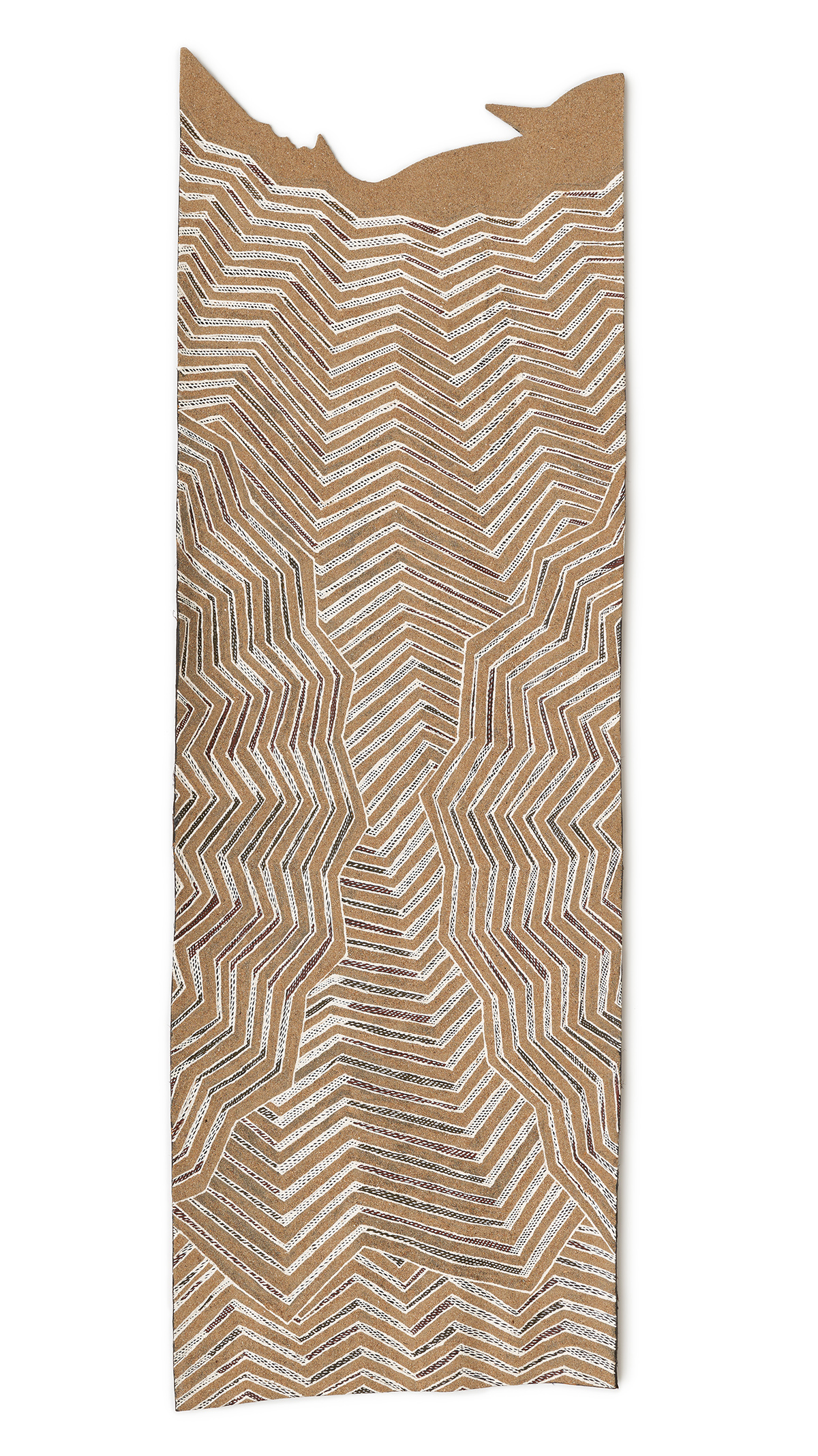CLICK HERE TO ENTER MADAYIN ONLINE.
Free, 30-minute tours will be offered on Sundays, beginning March 3. Click here to view the scheduling calendar.
One of the most significant touring exhibitions of Aboriginal Australian art ever staged returns to the city where it was first envisioned. Madayin: Eight Decades of Aboriginal Australian Bark Painting from Yirrkala features more than 50 masterpieces of ochre painting on eucalyptus bark, many of which have never been on view outside of Australia.
Drawn from the Kluge-Ruhe Aboriginal Art Collection of the University of Virginia and important museum and private collections in the United States and Australia, Madayin was curated by a team of Yolŋu Aboriginal Australian artists and knowledge holders from northern Australia. The idea for the exhibition was conceived in 2015 by Yolŋu artist and leader Djambawa Marawili during a residency at Kluge-Ruhe. After encountering the rich collection of paintings from his homelands held at the University of Virginia (UVA), he declared the need for an exhibition that would share these paintings with the world. Over the next seven years Marawili led a team of Yolŋu curators, collaborating with Kluge-Ruhe to create this deep exploration of historic and contemporary bark painting.
The title of the exhibition, Madayin, is a Yolŋu word that means both sacred and beautiful. The exhibition includes historic works dating as early as 1935 as well as newly commissioned paintings produced especially for the exhibition. Featuring four generations of artists, it includes some of Australia’s most acclaimed Indigenous artists, including Woŋgu Munuŋgurr, Wandjuk Marika OBE, Naminapu Maymuru-White and Gunybi Ganambarr.
Marawili notes, “It is very important to show these old paintings alongside contemporary works, to recognize that we Yolŋu have enduring patterns that connect us to our Country. I am proud to make this connection to the United States. The art went first—all those old paintings in the museums. What follows is reconciliation and the passing knowledge to America through our art. Because art is important to us. It represents our mind and our soul.”
